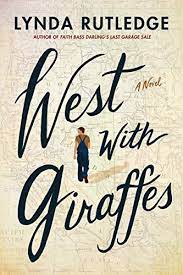Niland, Conor. The Racket: On Tour with Tennis's Golden Generation -- and the Other 99%. Dublin, Ireland: Sandycove (Penguin). 2025. Print.
Behind every successful tennis player is a parent who refused to allow them to quit. I was ten when I first told my folks that I wanted to give it all up. They didn't yield then, and they never did. Tennis was our family business, and the stakes were made clear to me when I was young.
Description:
I used to play a lot of tennis, from age eight through college and later as a teaching professional internationally. But never in my wildest dreams did I imagine I had the game, physicality, or mentality to compete on any professional level. Without formal lessons, playing rag-tag survival tennis with "interesting" shots (my Turn-Around-Jump-Reverse-Spin serve comes to mind), I knew early on there were way too many levels above me to delude myself into pursuing a playing career. But teaching tennis was for me a different story, one I could excel at and really loved.
For Conor Niland, an Irish tennis player in the early 1980s through the late 1990s, the professional dream was his reality. At least it was for his parents and subsequently his two older siblings who trained and joined the professional circuit.
His first goal was to break away from the lowly Futures up into the Challenger Tour (for players ranked 100-500) and ideally into the elite ATP Tour of the top players ranked 1-100. Niland
explains that each win in any tourney gave him ATP points, helping
improve his ranking and placement in upcoming tournaments. A high enough
ranking allowed him to enter the next prestigious level
of tournaments with more luxuries, prize money and ATP points
available.
I grew to like the atmosphere around the house on the morning of a final, my senses were always heightened. From the moment you woke up, every sound appeared that little bit sharper: the spoon hitting the cereal bowl, the bread popping out of the toaster. Everyone was dressed more smartly, and spoke in a quieter, softer tone.
Junior training had its ups and down for Niland. At twelve, he beat an unknown Roger Federer in straight sets. Later, when training at the Nick Bollettieri IMG Academy for two weeks, he noted that the facility is "a tennis zoo: kids are kept caged in courts all day and fed tennis balls," although the Academy did develop players including Andre Agassi, Monica Seles, Jim Courier, and Maria Sharapova.
His climb from the backyard upward, recounted on a tournament by tournament basis, reveals the trials and tribulations of a young player on his way up (hopefully), the goals he achieves along the way as well as the blown opportunities that might have helped him. His lifestyle and behavior are also laid out as he struggles with decisions faced both on-court and off. He recalls practice
hitting sessions or matches with great players like Andy Murray, the Williams
sisters, Andy Roddick and many others now lost in tennis obscurity. Along the way, Niland provides astute, fascinating comments about each player.
It's not exactly right to say that the very top guys like Djokovic hit the ball much harder....But they hit it deeper, right to the baseline, and they do it relentlessly. It doesn't look like a big difference on TV, but that extra foot and a half of depth, over and over, is a killer. This didn't so much put me under pressure as put me under siege.
Traveling 35 weeks a year, he had no time for social relationships with women or player s concentrating on their own struggles to survive. Sometimes he played nine tournaments in ten weeks, flying all over the world from Doha to Chennai to Montreal to Switzerland to Banja Luka and on and on and on.
Expenses are also always in his mind. Can he afford to pay a coach who could free him from the tedious requirements of finding hitting partners, give him professionals training and advice, and provide companionship as Niland travels weekly from country to country? How can he deal with the pressure of competition, knowing that a win would secure necessary funds and ATP points (not to mention necessities like travel expenses, equipment, and food), while a loss would lower his ranking?
Along the way he also discusses his encounters with physiotherapists, gambling on matches, banned substances, sideline coaching, tennis parents, qualifying tourneys, wildcard entrances to the main draw, and even food poisoning at an inopportune moment.
I was totally involved with Conor Niland's life, his ambitions, his frustrations, and his day-to-day, tournament-to-tournament lifestyle. When he succeeded, I felt elation. When he stumbled (choked?), I honestly felt bad for him, a player I previously had never heard of.
There
were matches in my career in which it felt as though what was at stake
was not merely qualification, but my identity too....How long was I
going to give it? I was going to give it years if it meant getting a few
great hours in return.
Highly recommended for an insider's look into the everyday adder to tennis success and the impending slide back down that also awaits every player at every level.
[If this book interests you, be sure to check out:]
Point by point analysis of the 1978 US Open tennis match between Arthur Ashe and Clark Graebner. McPhee takes readers inside the players' minds as they devise strategies, relish successes, and overcome missed opportunities. Provides the background and personalities which influence each player's shot selection, strategy, and mental game.
Happy reading.
Click here to browse over 435 more book recommendations by subject or title (and read the introduction to The First Sentence Reader).







